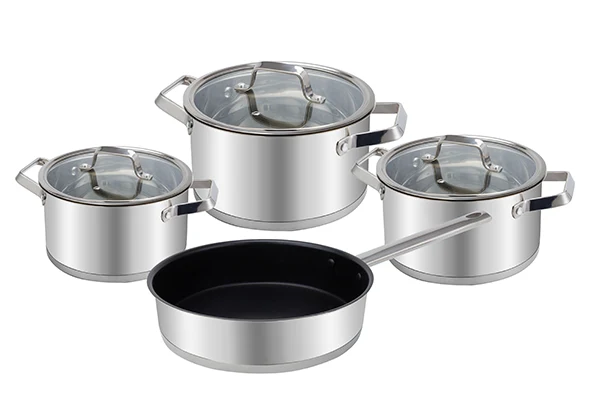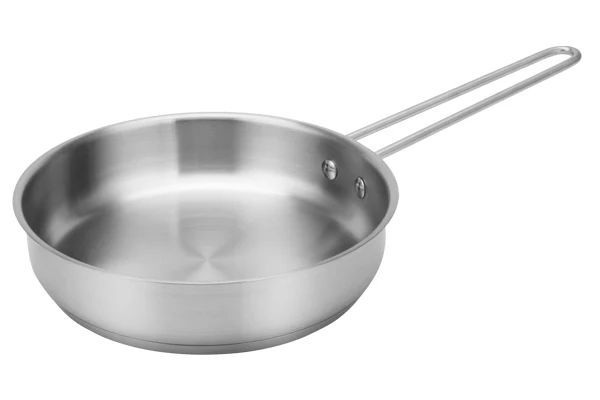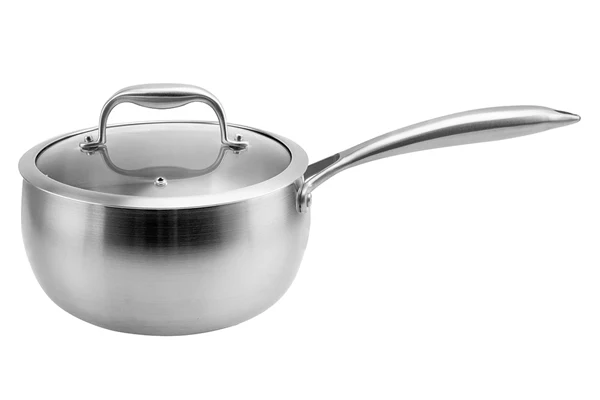Stainless Steel Cookware Manufacturers & Supplier
Changwen is a professional stainless steel cookware manufacturer for 22 years, using the best stainless steel materials to produce high-quality stainless steel cookware. Produce different shapes of pot bodies, such as Belly Shape, tulip shape. Rich appearance Marble paint, blue ceramic painting. Featured handles, such as Detached Handle, bakelite folding handle. Various shapes of pot lids, such as silicone glass lid. And provide OEM and ODM services with short production cycle.
Breaking Through Convention And Continuing To Innovate
Changwen continues to push the boundaries of cookware design and functionality, setting new industry standards and enhancing the cooking experience for chefs and home cooks alike. Changwen continually invests in the latest manufacturing technologies to redefine the efficiency and quality of cookware production. From adopting advanced forging techniques that ensure uniformity and durability, to leveraging impact bonding technology for superior heat distribution, Changwen embraces innovation at every step of the manufacturing process.
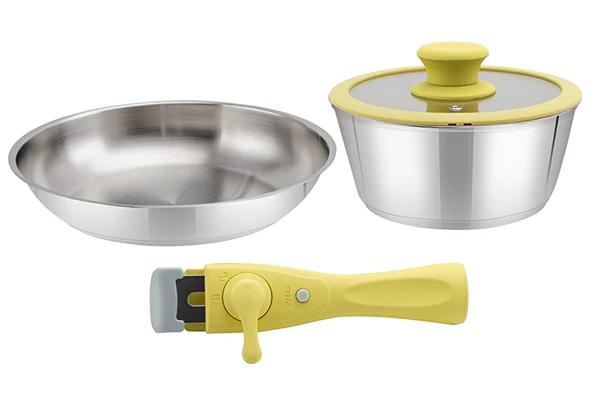
Folding Handle
The handle folding technology significantly improves the safety and convenience of using and storing cookware. Improved space usage, cookware with foldable handles takes up less storage space.
Detachable Handle
Detachable handles on cookware represent a significant advancement in kitchen convenience and efficiency. Cookware with detachable handles can easily transition from the stovetop to the oven, as the handle can be removed to make the cookware oven-safe. Detachable handles allow for more compact storage solutions. By removing the handles, pots and pans can nest within each other, taking up less space in kitchen cabinets or drawers. Equipped with a sturdy and intuitive locking system, ensuring the handle is securely attached to the cookware and remains stable during use, without accidentally swinging or falling off.
Tulip Shape Body
The Tulip Shape body, with its elegant and fluid lines, brings a touch of sophistication to kitchenware. The wider top opening allows for better evaporation and reduction, making it ideal for simmering sauces or soups where concentration of flavors is desired. The gentle flare at the top reduces dripping and spillage, making for cleaner and more precise pouring of liquids.
Marble Painting
This combination merges the durability and even heat distribution of stainless steel with the easy cleanup and low-fat cooking benefits of non-stick technology, all while presenting an aesthetically pleasing marble-like appearance. The marble effect offers a unique and elegant look, transforming ordinary cookware into decorative kitchen pieces that can complement any kitchen decor.
Meet Changwen Stainless Steel Cookware
Customize your stainless steel cookware, including: coating, shape and size, style, lids, handles, labels and packaging.
A stainless steel cookware set is a collection of kitchen pots and pans made primarily from stainless steel, which is revered for its strength, durability, and shiny, sleek appearance. These sets typically include a combination of frying pans, sauté pans, saucepans, and stockpots, each designed to perform various cooking tasks. The sets can be stacked to save kitchen space.
Customization Options:
- Material 304/316
- Shape & Size
- Style
- Coating
- Composite bottom, single layer, three layers, five layers
- Lid & Handle
- Label & Packaging
Traditional stainless steel pans do not have a non-stick coating; their cooking surface is simply stainless steel, which is a blend of steel, chromium, and often nickel. If you want a stainless steel shell and a non-stick experience, you can choose a coated stainless steel pan. Commonly used coatings include Teflon (PTFE) and Ceramic. Common sizes of stainless steel frying pans typically include diameter options such as 8 inches, 10 inches, and 12 inches.
Customization Options:
- Material 304/316
- Shape & Size
- Style
- Coating
- Composite bottom, single layer, three layers, five layers
- Lid & Handle
- Label & Packaging
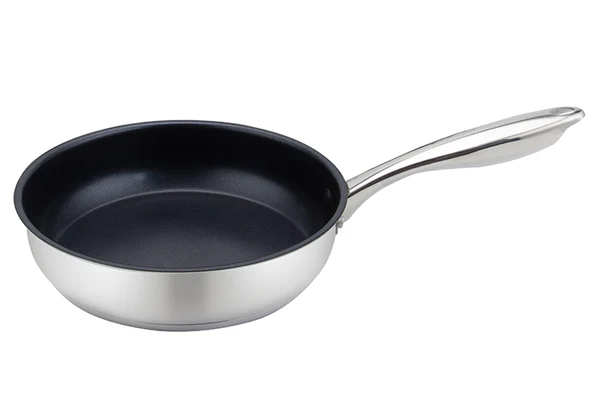
Stainless Steel Sauté Pan
Sauté pans typically have straight sides that help contain food and liquids when tossing or stirring. This differs from a skillet, which has sloped sides.They usually range in diameter from about 8 inches to 12 inches or more, accommodating various cooking needs. Materials include: Stainless Steel, Non-Stick.
Customization Options:
- Material 304/316
- Shape & Size
- Style
- Coating
- Composite bottom, single layer, three layers, five layers
- Lid & Handle
- Label & Packaging
Saucepan is generally smaller in size than a stockpot and is similar in shape to a small stainless steel pot, but has a handle, features fast heating and easy operation, and has excellent thermal conductivity and corrosion resistance. Saucepan sizes typically range from 1 quart to 4 quarts. Smaller saucepans (1-2 quarts) are great for melting butter, warming milk, or preparing sauces. Larger saucepans (3-4 quarts) are versatile for a range of uses, including cooking grains, boiling vegetables, or making small batches of soup.
- Material 304/316
- Shape & Size
- Style
- Coating
- Composite bottom, single layer, three layers, five layers
- Lid & Handle
- Label & Packaging
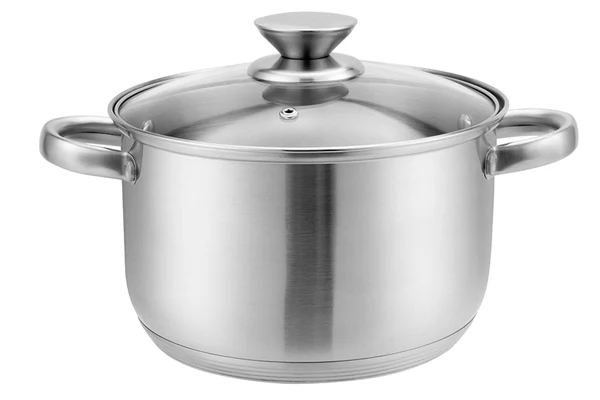
Stainless Steel Soup Pot
Stainless steel soup pot are another popular stewing pot that offer durability and ease of cleaning. Stainless steel pots have better heat conductivity and can heat soup evenly. In addition, the stainless steel pot will not chemically react with the ingredients and will not change the taste of the soup.
Customization Options:
- Material 304/316
- Shape & Size
- Style
- Coating
- Composite bottom, single layer, three layers, five layers
- Lid & Handle
- Label & Packaging
Stainless Steel Stock Pot
Stainless steel stock pots are suitable for cooking light dishes such as chicken soup, vegetable soup and mushroom soup. It can completely retain the original flavor of the food. It is durable, easy to clean, and not easy to rust. Stainless steel pots have good thermal conductivity, which can heat the soup quickly and shorten the stewing time. Stockpots come in various sizes, often ranging from 6 quarts to 12 quarts or more. Larger commercial stockpots are suitable for restaurants, cafeterias, factories, mass production or meal preparation.
- Material 304/316
- Shape & Size
- Style
- Composite bottom, single layer, three layers, five layers
- Lid & Handle
- Label & Packaging
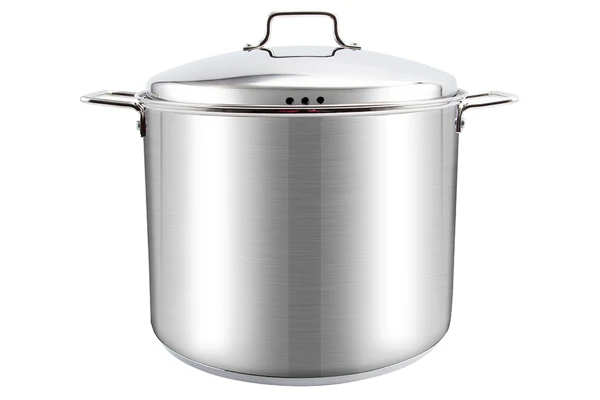
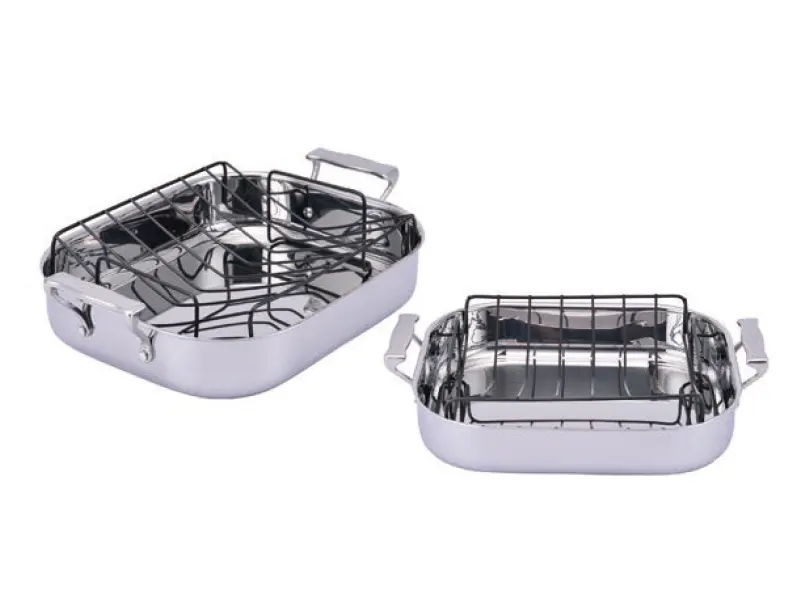
Stainless Steel Roasting Tray For Turkey
Changwen roasting pan with removable V-shaped nonstick roasting rack. Highly polished 18/10 stainless steel cooking surface offers superior stick resistance and easy maintenance,plus won treact with food. Single ply polished stainless steel construction With warp resistant bonded base. It can reach temperatures up to 600 degrees Fahrenheit and is dishwasher safe. Easily roast turkey, chicken, lamb chops, steak, potatoes, vegetables and more.
Customization Options:
- Material 304/316
- Shape & Size
- Style
- Coating
- Lid & Handle
- Label & Packaging
Stainless Steel Steamer Pot
The Steamer Pot can prepare a variety of delicious foods at one time, saving time and effort. The structural design of steaming at the top and boiling at the bottom makes the cooking process more convenient. Steaming and stewing can be performed at the same time, which improves cooking efficiency. The Steamer Pot is made of stainless steel, uncoated, corrosion-resistant, and not easy to rust. 304 stainless steel has excellent high temperature resistance and can withstand high temperature cooking, ensuring the health and safety of food.
- Material 304/316
- Shape & Size
- Style
- Composite bottom, single layer, three layers, five layers
- Lid & Handle
- Label & Packaging
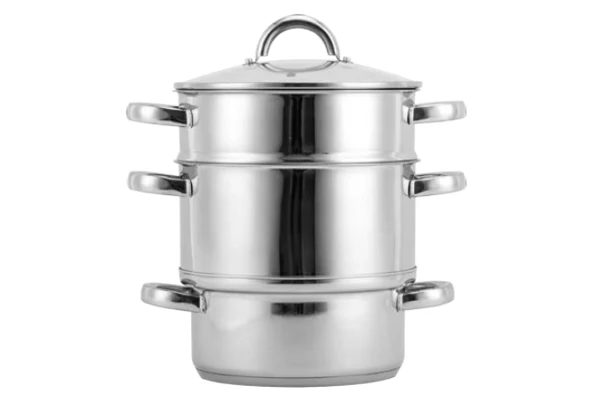
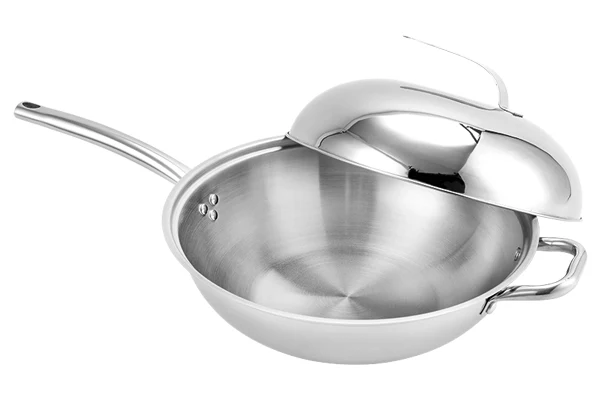
Stainless Steel Wok
The Stainless Steel Wok is round and concave and can be used to cook, boil, pan-fry, deep-fry, stir-fry and other cooking methods. Has a long handle or two ears.
Customization Options:
- Material 304/316
- Shape & Size
- Style
- Composite bottom, single layer, three layers, five layers
- Lid & Handle
- Label & Packaging
What is Stainless Steel?
Stainless steel is a group of iron-based alloys known for their corrosion resistance. This resistance is primarily due to the alloy containing a minimum of 10.5% chromium, although nickel, molybdenum, and other elements may also be included to achieve different properties and enhance resistance to corrosion. When exposed to air, chromium reacts to form a passive layer of chromium oxide, which effectively seals the surface and prevents further corrosion. This layer is incredibly thin, yet it is strong enough to repair itself if it’s scratched or damaged.
Stainless steel is available in several grades, which are divided based on their microstructure and composition, leading to a wide variety of types with different properties suited to different applications.
| Type | Description | Characteristics | Suitable for Kitchenware? |
| Austenitic | Contains high levels of chromium and nickel; non-magnetic; cannot be hardened by heat treatment | Excellent corrosion resistance; good formability; non-magnetic after annealing; commonly used in kitchen applications | Yes, especially the 304 grade (18/8) which is most popular for kitchen utensils due to its corrosion resistance and ease of cleaning. 316 grade (with 2% molybdenum) is also used for more corrosion-prone environments. |
| Ferritic | Contains lower levels of nickel than austenitic; magnetic; usually contains 12-17% chromium | Moderate corrosion resistance; better thermal conductivity than austenitic; lower cost; ferritic grades are often used for appliances and decorative trim | Sometimes, but less common due to its lower corrosion resistance compared to austenitic grades. |
| Martensitic | Similar in composition to ferritic but with added carbon, making it hardenable by heat treatment | Strong and hard; magnetic; lower corrosion resistance compared to austenitic and ferritic grades | Rarely, martensitic stainless steel is more commonly used for items requiring hardness and strength, like cutlery and surgical instruments, rather than general kitchenware. |
| Duplex | Combines the properties of austenitic and ferritic; typically contains around 22% chromium, 5% nickel, and 3% molybdenum | High strength; very good corrosion resistance; excellent stress corrosion cracking resistance | Yes, but not as common as austenitic grades for kitchenware. It’s more often used in industrial applications and areas with high corrosion risk, like marine or chemical processing equipment. |
Common Types Of Stainless Steel For Kitchenware
Stainless steel is a common and widely used metal material. It has the advantages of corrosion resistance, oxidation resistance and appearance, so it is widely used in various fields. However, there are many types of stainless steel, each with its own specific properties and uses. The following types are commonly used in kitchenware production.
| Type | Grade | Features | Common Uses in Kitchen |
| Austenitic | 304 (18/8 Stainless Steel) | 18% chromium, 8% nickel. Excellent resistance to corrosion, good formability. | Cookware, utensils, appliances. |
| Austenitic | 316 (18/10 Stainless Steel) | Similar to 304 but with additional 2% molybdenum for enhanced corrosion resistance. | High-quality cookware, marine environments. |
| Ferritic | 430 Stainless Steel | Higher hardness, lower corrosion resistance. Heat-treatable. | Budget cutlery, kitchen tools. |
| Martensitic | Varied | High strength; very good corrosion resistance; excellent stress corrosion cracking resistance | Professional-grade knives. |
| Specialty | Duplex Stainless Steel | Mix of austenitic and ferritic features. High strength, good corrosion resistance. | Special applications, professional tools. |
| Specialty | Precipitation-Hardening (PH) | Heat-treatable for increased strength. | Professional-grade knives, utensils. |
Comparison Of Stainless Steel And Other Materials Cookware
| Material | Advantages | Disadvantages |
| Stainless Steel | Durable and long-lasting; Non-reactive with foods; Suitable for high heat; Dishwasher safe; Elegant appearance | Poor heat conduction unless bonded with aluminum or copper; Can be expensive; Food may stick if not used properly |
| Non-Stick | Easy to clean; Less oil needed for cooking; Good for delicate foods like eggs or fish | Coating can wear off over time; Cannot withstand very high heat; Usually not dishwasher safe |
| Cast Iron | Excellent heat retention; Naturally non-stick when seasoned; Adds dietary iron; Extremely durable | Heavy; Requires seasoning; Can rust if not maintained; Reactive to acidic foods |
| Aluminum | Excellent heat conductivity; Lightweight; Generally less expensive | Can react with acidic or alkaline foods; Not as durable as other materials; Might warp over high heat if not anodized |
| Copper | Superior heat conductivity; Precise temperature control; Aesthetically pleasing | Expensive; Reactive with acidic foods; Requires polishing to maintain shine; Often needs a lining of another metal |
| Ceramic | Generally non-reactive; Can handle high heat; Non-stick; Comes in various colors and styles | Can chip or crack; Non-stick qualities can diminish over time; Heat might not be as evenly distributed |
| Hard-Anodized Aluminum | Durable; Non-reactive; Excellent heat conductivity; Most are non-stick | More expensive than regular aluminum; Color can fade with use; Not dishwasher safe typically |
| Glass | Does not react with foods; Allows for visual monitoring of cooking | Poor heat distribution; Can shatter if temperature changes are too rapid; Heavier than metal cookware |
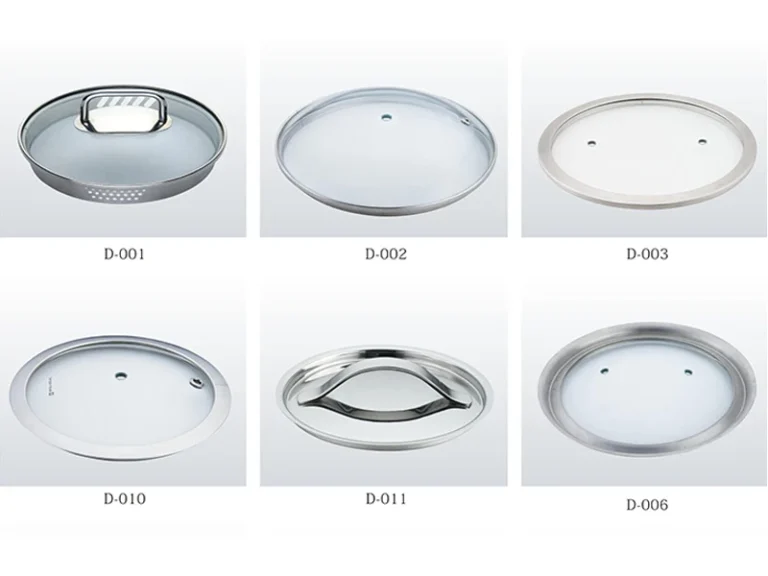
Lids
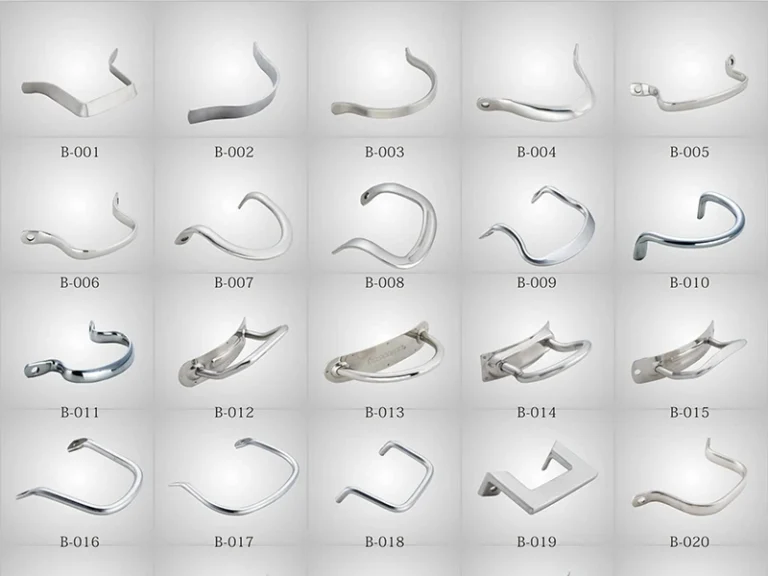
Handles
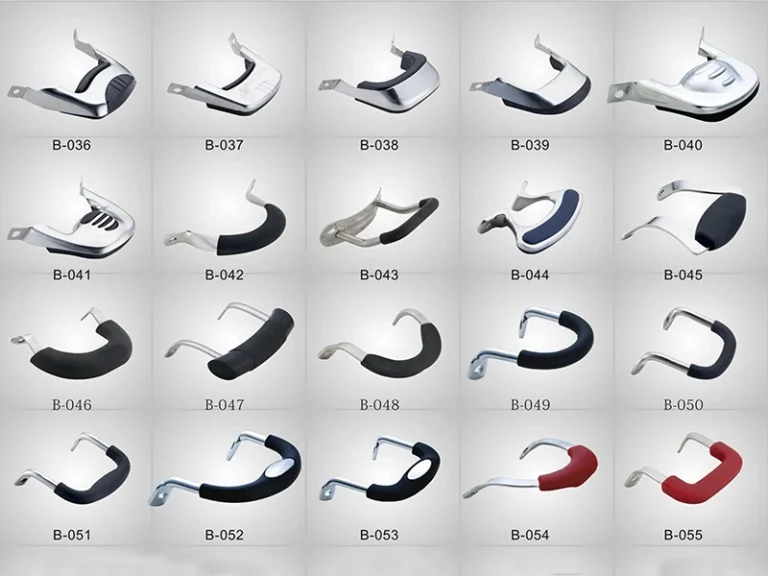
Handles
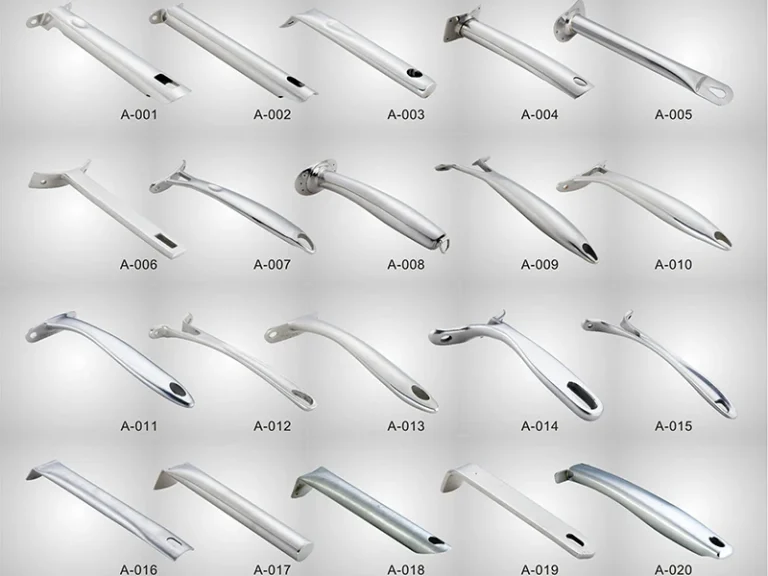
Handles
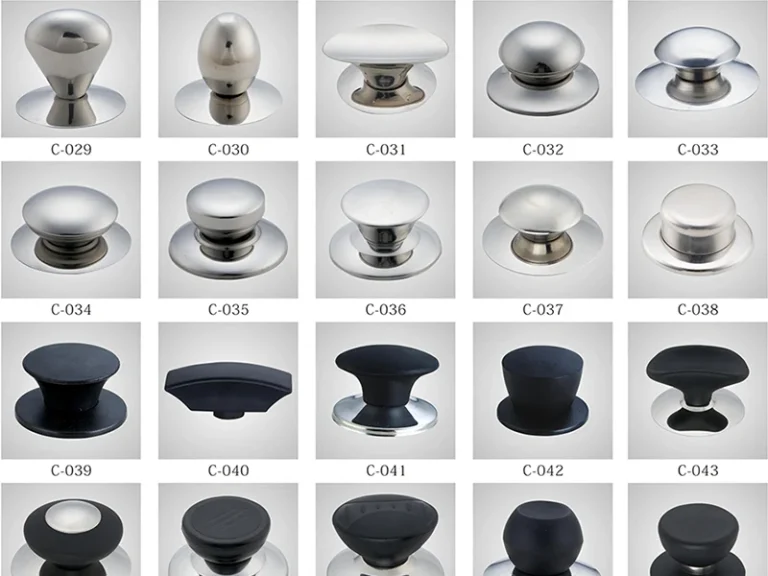
Lid Knob
Commonly Used Accessories For Custom Cookware
Cookware customization usually includes the following parts:
Pot body: the main structure of the pot, made of stainless steel. Customized pot shape, color, material, thickness.
Base: Different metal layers are used, including single layer, three layers, and five layers to enhance thermal conductivity and distribution.
Handle: Made of stainless steel, silicone or other heat-resistant materials, customized with different shapes.
Lid: glass lid, glass combined with stainless steel, full stainless steel lid, etc. Rich customizable shapes.
How Stainless Steel Cookware Manufactured
Stainless steel cookware is popular for its corrosion resistance, durability and beauty. Its manufacturing process mainly includes material selection, cutting, forming, welding, grinding and polishing, surface treatment, assembly, quality inspection, packaging and shipment. Changwen stainless steel cookware starts with the selection of high-quality stainless steel materials, and through precise processing and strict quality control, ensures that each cookware can meet high standards of performance and appearance requirements. Each manufacturing link is closely linked to complete the transformation from raw materials to finished products.
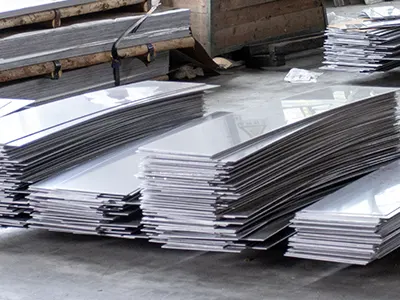
Selection of Materials
Choose high quality stainless steel material.
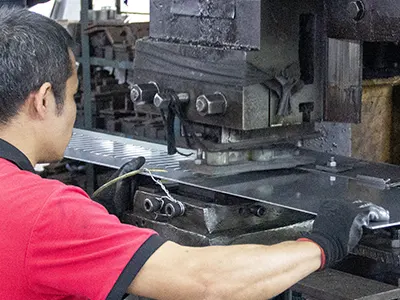
Cutting the Metal
Stainless steel sheets are cut into the desired shapes.
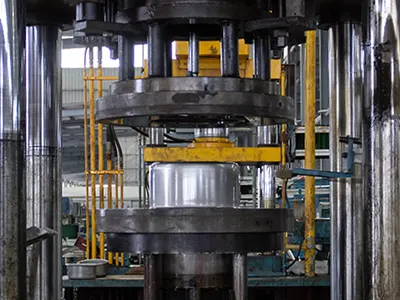
Body Brawing
The metal blank is stamped into shape by a stamping machine in the mold.
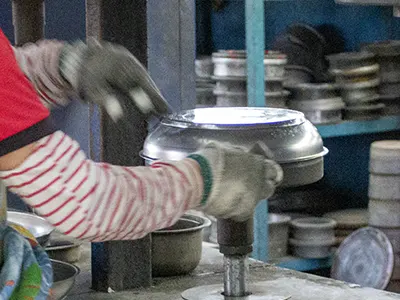
Brazing Botton
Use a torch to heat the melted brazing alloy and combine it with the pot body
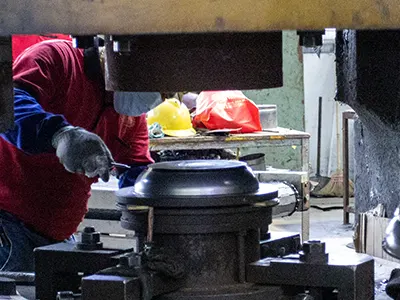
Impact Bond
Layers of conductive 430 stainless steel and heat-transferring aluminum are laminated to the bottom of the cookware under 200 tons of pressure.
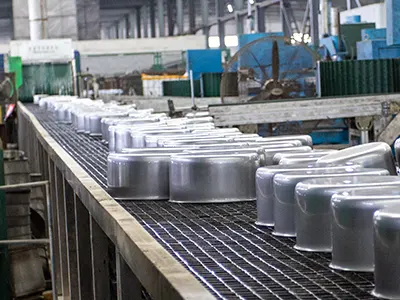
Cleaning
The brazed cookware may have residues from the brazing process, which are cleaned off.
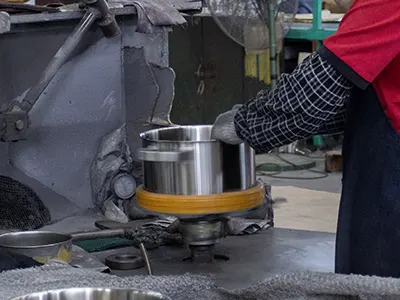
Polishing
Cookware is machined or ground to ensure that it is perfectly flat for optimal contact with the stovetop and a nice glossy finish.
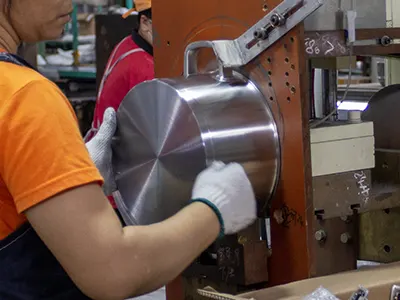
Handle Riveting
Handles, lids, and any additional components are attached to complete the cookware assembly.
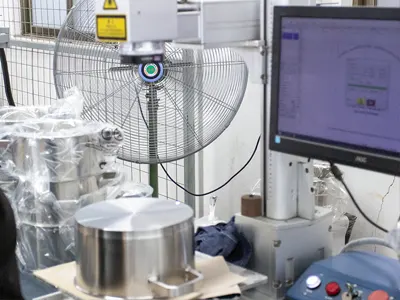
Laser Engraving
The brand logo is engraved on the surface of the cookware through laser engraving.
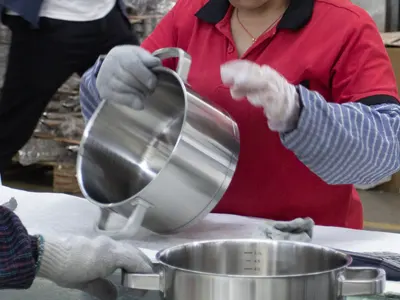
Quality Inspection
The cookware is inspected to ensure it meets all quality standards.
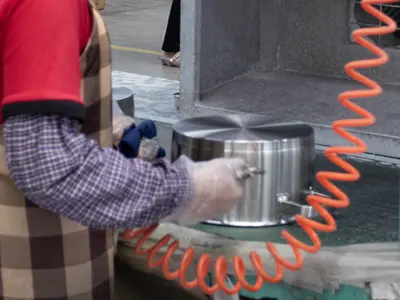
Cleaning
Carry out cleaning and organization.
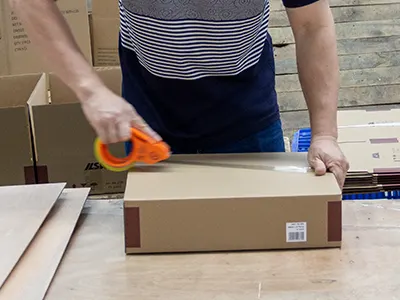
Packing
Packaged and prepared for distribution.
Become Our Partner
If you are a restaurant, hotel, supermarket, or cookware brand owner who is looking for a durable, high-quality stainless steel cookware manufacturer that provides quality services, then we have the opportunity to become a partner. We provide the following support:
Bulk and Custom Orders: Ability to handle large volumes of orders and provide customization options to meet specific customer needs.
Comprehensive Product Line: Offering a wide selection of cookware from basic pots and pans to a variety of specialty cooking tools.
Compliance and Certification: Products comply with relevant health and safety standards.
Stable production timeliness: planned production and testing, and completion of product production within the contract time.
After-sales support: Provide strong customer service and obtain timely and effective solutions to feedback problems.
Frequently Asked Questions
Is stainless steel cookware safe to use?
Answer: Yes, stainless steel cookware is considered safe for cooking. It does not react with food ingredients, and high-quality stainless steel does not leach harmful chemicals into your food.
Can stainless steel cookware be used on induction cooktops?
Answer: Not all stainless steel cookware is compatible with induction cooktops. Cookware needs to have a magnetic base to work on induction. Many brands offer induction-compatible stainless steel cookware, so it’s important to check the product specifications.
How do you prevent food from sticking to stainless steel cookware?
Answer: To prevent sticking, heat the pan on medium heat, then add oil once the pan is hot. Wait for the oil to heat up before adding your food. Also, ensure the food surface is dry and not cold from the refrigerator.
How do you clean stainless steel cookware?
Answer: For regular cleaning, washing with warm water and a mild detergent is sufficient. For tougher stains, a paste of baking soda and water applied with a soft brush can be effective. Avoid using steel wool or abrasive materials that can scratch the surface.
Does stainless steel cookware work well for high-heat cooking methods?
Answer: Yes, stainless steel cookware is excellent for high-heat cooking techniques like searing and browning because it can withstand high temperatures without warping or reacting with food.
Can acidic foods be cooked in stainless steel cookware?
Answer: Stainless steel is generally resistant to corrosion and does not react with acidic foods, making it safe to cook a wide range of foods without worrying about metallic tastes or chemical leaching.
How do you maintain the shine of stainless steel cookware?
Answer: To maintain its shine, regularly clean your stainless steel cookware and polish it with a vinegar-water solution or a commercial stainless steel cleaner. Dry it thoroughly after washing to prevent water spots.
Is stainless steel cookware dishwasher safe?
Answer: Most stainless steel cookware is dishwasher safe, but check the manufacturer’s recommendations. Hand washing is often advised to maintain the aesthetic appeal of the cookware over time.
How does stainless steel cookware compare to non-stick?
Answer: Stainless steel cookware is more durable and suitable for high-heat cooking methods, whereas non-stick cookware provides convenience by preventing food from sticking but requires careful use to maintain the coating. Both have their advantages, and the choice depends on cooking preferences and needs.
Why do some stainless steel pans have an aluminum core?
Answer: Stainless steel is not the best heat conductor. Many stainless steel pans have an aluminum or copper core encapsulated between layers of stainless steel to improve heat distribution, ensuring even cooking without hot spots.
Get a cookware catalog?
WE’RE HERE TO HELP. 24 HOURS A DAY, 7 DAYS A WEEK.

